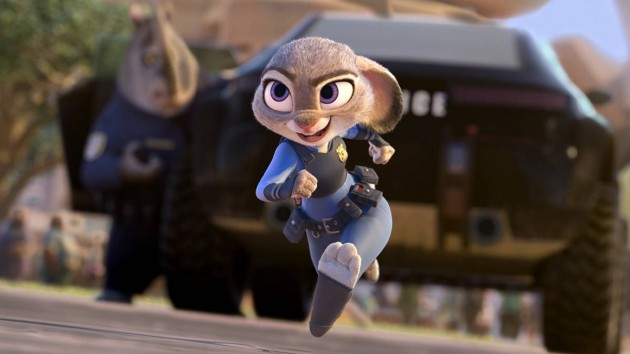Last year, Disney Animation’s Big Hero 6 wowed audiences with its touching story, funny characters, and beautiful world, and that success was repeated with Zootopia. In an industry thought to be dominated by Pixar, Disney Animation has recaptured the magic that built it such a formidable reputation in the first place.
But it’s not just incredible storytelling and whip-smart themes that made these films so memorable (obviously that helps). What these two movies have in common is a groundbreaking technology called Hyperion, which was developed by Disney Animation in-house. Have you ever noticed how incredibly natural the light looks in these movies? No? Good—that means Hyperion is doing its job.
We often take lighting in film for granted but it’s an essential tool directors use to convey mood and emotion. In animation, utilizing light has been difficult because technology simply hasn’t been good enough. Thanks to Hyperion, however, animators are able to get a better sense of what a scene will look like long before it’s finished. It’s incredibly useful when creating detailed worlds.
Following the release of Zootopia on Blu-ray, we briefly spoke to the movie’s directors about why Hyperion is so crucial to the final product.
Basically, Hyperion is a technology that allows animators to more naturally simulate the behavior of light. It supports global illumination and path tracing of a scene with a lot of geometry. Without it, the worlds of San Fransokyo and Zootopia simply would not be possible.
Here’s what Byron Howard, co-director of Zootopia, had to say about the technology:
Light is so key for storytelling and with Hyperion you can get a sense what a scene will look like long before it’s finished. Zootopia would not have been possible a few years ago just because of how diverse and detailed the world is, it’s much more natural. The environments all diffuse light differently and Hyperion allows us to do things much quicker and in a much more realistic way.
Before, animators would render the light bounces manually, which takes an insane amount of time and isn’t always possible with worlds as complex as Zootopia. We often don’t think of these things when we’re watching them, but it’s astonishing how much time and effort goes into the final product. Technology such as Hyperion makes the job of animators and directors much easier.
Hank Driskill, Technical Director of Big Hero 6, echoed these sentiments last year when we spoke with him last year:
Instead of letting the light bounce around randomly, Hyperion looks at all light traveling in more or less the same direction, and treats all that at the same time. So rather than randomly chasing rays around, it deals with the rays in these bundles based on where they were traveling. That gave us two things: it meant we didn’t need to have a whole scene accessible at any given moment, only the stuff that was in the path of that bundle of rays. The other thing it let us do is treat the bounces of those rays as a separate step.
Big Hero 6 and Zootopia are two of the most beautiful animated films to ever hit the big screen, and a lot of that has to do with the development of Hyperion, which is still considered to be in beta. Now that Disney Animation has made the switch, however, the studio is going all in, using it for this Thanksgiving’s Moana and Gigantic, which comes out in 2018.
Next time you fire up one of these Disney Animation films, pay attention to how natural the light looks. That’s Hyperion at work.














